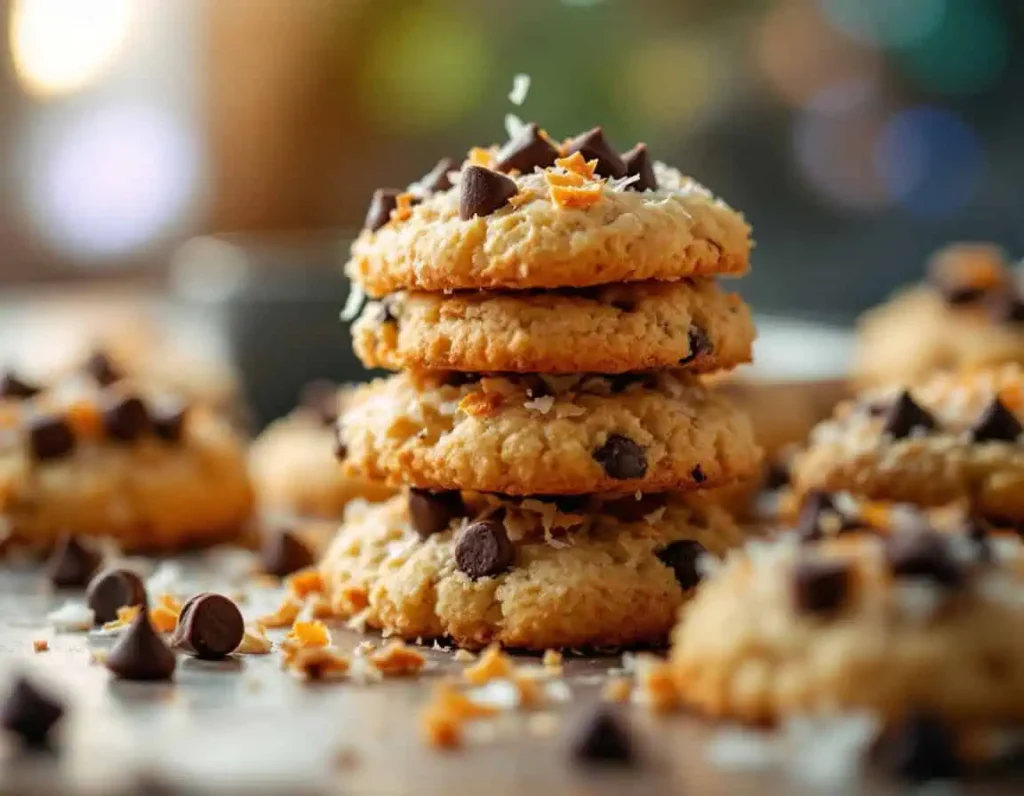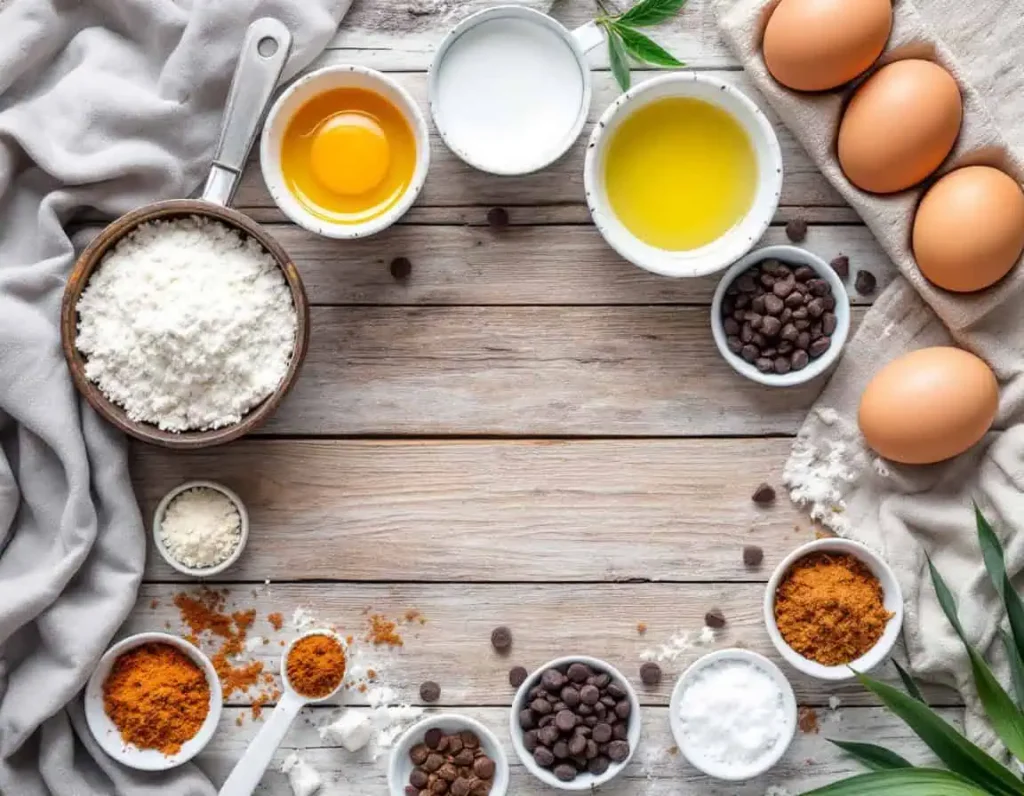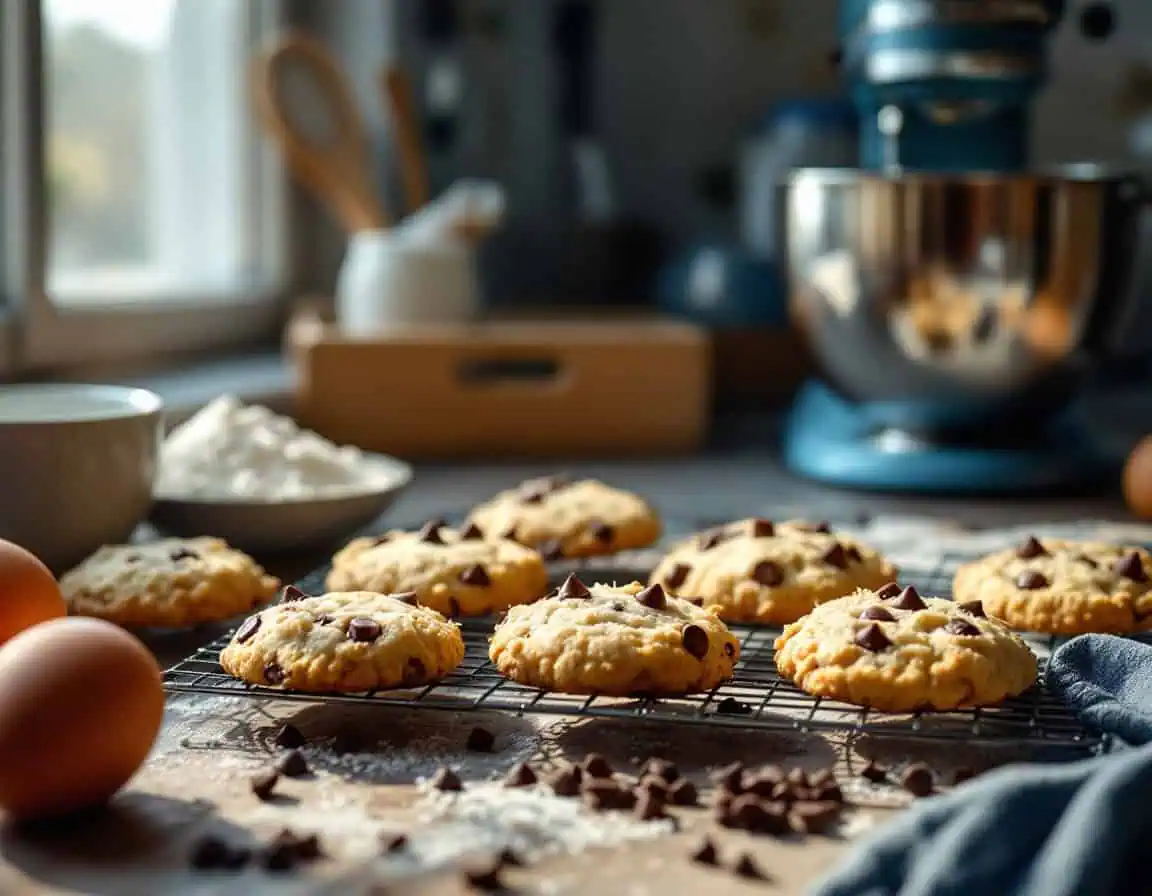Are you frustrated because your coconut flour cookies keep falling apart? You’re not alone. Many home bakers struggle with this common issue when working with coconut flour. In this comprehensive guide, we’ll explore why do my coconut flour cookies fall apart and share proven solutions to help you achieve perfect, cohesive cookies every time.
Understanding Coconut Flour’s Unique Properties
Before diving into solutions, it’s essential to understand why do my coconut flour cookies fall apart. Here are some key properties of coconut flour that affect baking:
1. Absorbency
Coconut flour is extremely absorbent, soaking up moisture like a sponge. This means that recipes using coconut flour often require more liquid than those using traditional flours. If you don’t adjust your liquid ingredients accordingly, your cookies will be dry and crumbly.
2. Lack of Gluten
Unlike wheat flour, coconut flour lacks gluten, which typically acts as a binding agent in baked goods. Gluten provides elasticity and helps hold the structure of cookies together. Without it, you need to rely on other ingredients to create a cohesive dough.
3. Texture
The flour has a fine, dry texture that can make doughs crumbly if not handled correctly. This can lead to cookies that fall apart easily, especially if the dough is not mixed or rested properly.
4. Nutritional Profile
Coconut flour is high in fiber and low in carbohydrates, making it a popular choice for gluten-free and low-carb diets. However, this high fiber content can also contribute to the dryness of baked goods if not balanced with enough moisture.
5. Flavor
Coconut flour has a distinct flavor that can enhance baked goods but may also overpower other flavors if not balanced correctly. Understanding how to incorporate it into recipes is crucial for achieving the desired taste.
Common Reasons Why Coconut Flour Cookies Crumble
1. Incorrect Liquid-to-Flour Ratio
One of the primary reasons why do my coconut flour cookies fall apart is an improper balance of wet and dry ingredients. Consider these points:
- Absorption Rate: Coconut flour absorbs 4-6 times more liquid than regular flour. If you don’t adjust your liquid ingredients accordingly, your cookies will be dry and crumbly.
- Moisture Balance: Too little moisture leads to dry, crumbly cookies, while too much can make the dough too wet and unmanageable.
- Binding Agents: Insufficient binding agents can’t hold ingredients together, leading to a fragile cookie structure.
2. Wrong Binding Agents
The lack of proper binding ingredients often causes why do my coconut flour cookies fall apart. Essential binders include:
- Eggs: Whole eggs work best as they provide moisture and structure. Egg whites can also be used for a lighter texture.
- Xanthan Gum: This gluten substitute helps mimic the elasticity and chewiness of gluten. It’s particularly useful in gluten-free baking.
- Psyllium Husk: A natural fiber that can help bind ingredients together. It absorbs moisture and creates a gel-like consistency.
- Ground Flax Seeds: When mixed with water, they create a gel-like substance that acts as a binder. This is a popular vegan alternative.
- Chia Seeds: Similar to flax seeds, they can be used to create a binding gel. They also add a nutritional boost.
3. Overmixing the Dough
Overmixing can lead to tough cookies. When you mix too much, you can incorporate too much air and develop a texture that is not ideal for cookies.
4. Incorrect Baking Temperature
Baking at the wrong temperature can also lead to cookies that fall apart. If your oven is too hot, the cookies may spread too quickly and not set properly. Conversely, if the temperature is too low, they may not bake through.
5. Not Allowing the Dough to Rest
Resting the dough is crucial when using coconut flour. This allows the flour to absorb moisture fully, resulting in a better texture. If you skip this step, your cookies may not hold together well.
Solutions to Prevent Crumbling Cookies
Perfect Your Recipe Ratios
To ensure your coconut flour cookies stay together:
- Use the Right Amount of Coconut Flour: A general rule of thumb is to use 1/4 cup of coconut flour for every 1 cup of regular flour in standard recipes. This helps maintain the right balance of dry to wet ingredients.
- Add Enough Eggs: For every 1/4 cup of coconut flour, include 1 egg. This helps provide moisture and binding. If you’re making a vegan version, consider using flax or chia eggs.
- Include Adequate Fat: Fats like butter, coconut oil, or nut butters add moisture and richness, helping to bind the ingredients. They also contribute to the flavor and texture of the cookies.
- Allow Batter to Rest: Letting the batter rest for 5-10 minutes allows the coconut flour to absorb moisture fully. This can significantly improve the texture of your cookies.
Essential Moisture Management
Proper moisture is crucial for preventing coconut flour cookies from falling apart:
- Add Liquid Ingredients Gradually: Start with the minimum amount of liquid and add more as needed. This helps you achieve the right consistency without making the dough too wet.
- Let the Dough Rest: Allowing the dough to rest helps the coconut flour absorb moisture, resulting in a better texture. This is especially important for coconut flour, which can be very dry.
- Adjust for Humidity: In humid conditions, you may need to reduce the liquid slightly, while in dry conditions, you may need to add a bit more. Always consider the weather when baking.
- Use Room Temperature Ingredients: Cold ingredients can affect the dough’s consistency. Room temperature eggs and butter mix more easily and create a smoother dough.
Expert Tips for Perfect Coconut Flour Cookies
Mixing Techniques
- Whisk Dry Ingredients Thoroughly: This prevents clumps of coconut flour and ensures even distribution of leavening agents. It also helps to aerate the flour, which can improve the texture.
- Combine Wet Ingredients Separately: Mix wet ingredients in a separate bowl before adding them to the dry ingredients. This helps achieve a uniform mixture and prevents overmixing.
- Mix Until Just Combined: Overmixing can lead to tough cookies. Mix until the ingredients are just combined to maintain a tender texture.
- Let Dough Rest: Allowing the dough to rest for 10-15 minutes can improve the texture. This gives the coconut flour time to absorb moisture and swell.
Baking Recommendations
- Use Parchment Paper: This prevents sticking and makes for easier cleanup. It also helps cookies bake evenly.
- Maintain Consistent Oven Temperature: Use an oven thermometer to ensure your oven is at the correct temperature. This is crucial for even baking.
- Allow Cookies to Cool Completely: Letting cookies cool on the baking sheet for a few minutes before transferring them to a wire rack helps them set. This prevents them from breaking apart.
- Don’t Overbake: Cookies continue to cook after being removed from the oven, so take them out when they are slightly underbaked. This will help maintain a soft texture.

Troubleshooting Common Issues
Cookie Texture Problems
- Too Dry: If your cookies are too dry, try adding more liquid ingredients gradually or increasing the fat content. You can also try adding a bit of applesauce or yogurt for moisture.
- Too Wet: If the dough is too wet, allow it to rest longer or add small amounts of coconut flour until the desired consistency is reached. Be careful not to add too much at once.
- Falling Apart After Baking: Increase the amount of binding agents like eggs or xanthan gum in your recipe. This will help hold the cookies together better.
- Crumbling While Shaping: Chill the dough before handling to make it easier to shape. Cold dough is often easier to work with and less likely to fall apart.
Flavor Issues
- Bland Taste: Enhance flavor by adding vanilla extract, spices (like cinnamon or nutmeg), or citrus zest. These additions can elevate the overall taste of your cookies.
- Too Sweet or Not Sweet Enough: Adjust the sugar content according to your taste preferences. Consider using natural sweeteners like honey or maple syrup for a different flavor profile.
Storage Tips to Maintain Cookie Integrity
To keep your coconut flour cookies fresh and intact:
- Store in an Airtight Container: This prevents moisture loss and keeps cookies soft. You can also use a cookie jar with a tight seal.
- Place Parchment Paper Between Layers: This helps prevent sticking and keeps cookies intact.
- Keep at Room Temperature: Cookies can be stored at room temperature for up to 5 days. If you live in a humid environment, consider refrigerating them to prolong freshness.
- Freeze for Long-Term Storage: For longer storage, freeze cookies in an airtight container for up to 3 months. Thaw at room temperature before enjoying. You can also freeze the dough for later baking.
FAQs About Coconut Flour Cookies
Why are my coconut flour cookies so dry?
Coconut flour is highly absorbent. To prevent dryness:
- Use correct liquid ratios.
- Don’t overbake.
- Include adequate fats.
- Allow proper rest time.
Can I substitute regular flour with coconut flour?
No, you cannot substitute 1:1. Instead:
- Use 1/4 to 1/3 cup coconut flour for every cup of regular flour.
- Increase eggs and liquid ingredients.
- Adjust baking time and temperature.
How do I make coconut flour cookies stick together?
Ensure proper binding by:
- Using enough eggs.
- Adding xanthan gum or other binders.
- Including adequate fats.
- Allowing dough to rest.
Why are my coconut flour cookies falling apart after baking?
This usually occurs due to:
- Insufficient binding agents.
- Improper cooling time.
- Wrong ingredient ratios.
- Overbaking.
Can I use coconut flour in other baked goods?
Absolutely! Coconut flour can be used in various recipes, including:
- Pancakes
- Muffins
- Bread
- Cakes
How can I enhance the flavor of my coconut flour cookies?
To enhance flavor, consider adding:
- Vanilla extract
- Almond extract
- Citrus zest
- Spices like cinnamon or nutmeg

Best Ingredients to Use with Coconut Flour
Quality Binding Agents
- Fresh, Room-Temperature Eggs: They provide moisture and structure.
- Pure Vanilla Extract: Adds flavor and enhances sweetness.
- Natural Nut Butters: Almond or peanut butter can add richness and flavor.
- Melted Coconut Oil: Provides moisture and a subtle coconut flavor.
Complementary Flavors
- Dark Chocolate Chips: A delicious addition that pairs well with coconut.
- Shredded Coconut: Enhances the coconut flavor and adds texture.
- Chopped Nuts: Walnuts or pecans add crunch and flavor.
- Natural Sweeteners: Honey, maple syrup, or coconut sugar can be used for sweetness.
Creative Coconut Flour Cookie Variations
Chocolate Chip Coconut Flour Cookies
- Ingredients: Coconut flour, eggs, coconut oil, dark chocolate chips, vanilla extract, and a sweetener of your choice.
- Instructions: Mix all ingredients, let the dough rest, shape into cookies, and bake until golden.
Coconut Macaroons
- Ingredients: Shredded coconut, egg whites, sweetener, and vanilla extract.
- Instructions: Mix ingredients, form into balls, and bake until golden brown.
Peanut Butter Coconut Flour Cookies
- Ingredients: Coconut flour, peanut butter, eggs, honey, and baking soda.
- Instructions: Combine ingredients, shape into cookies, and bake until set.
Lemon Coconut Flour Cookies
- Ingredients: Coconut flour, eggs, coconut oil, lemon juice, lemon zest, and sweetener.
- Instructions: Mix all ingredients, let the dough rest, shape into cookies, and bake until lightly golden.
Spiced Coconut Flour Cookies
- Ingredients: Coconut flour, eggs, coconut oil, cinnamon, nutmeg, and sweetener.
- Instructions: Combine ingredients, let the dough rest, shape into cookies, and bake until fragrant.
Conclusion
Creating perfect coconut flour cookies that don’t fall apart requires understanding the unique properties of coconut flour and following proper techniques. By maintaining the right ingredient ratios, using appropriate binding agents, and following our expert tips, you can consistently bake delicious, cohesive cookies that hold together beautifully. Remember that practice makes perfect, and don’t be afraid to adjust recipes based on your specific needs and conditions.
With these guidelines, your next batch of coconut flour cookies will be both delicious and structurally sound! Enjoy experimenting with flavors and textures, and share your successes with friends and family. Happy baking!

